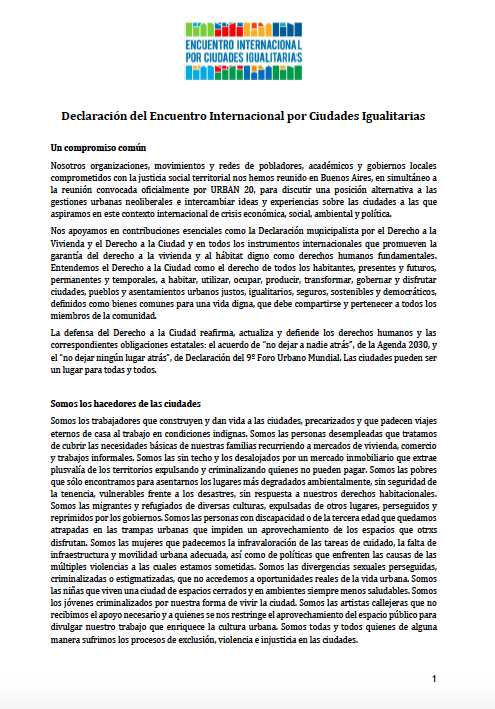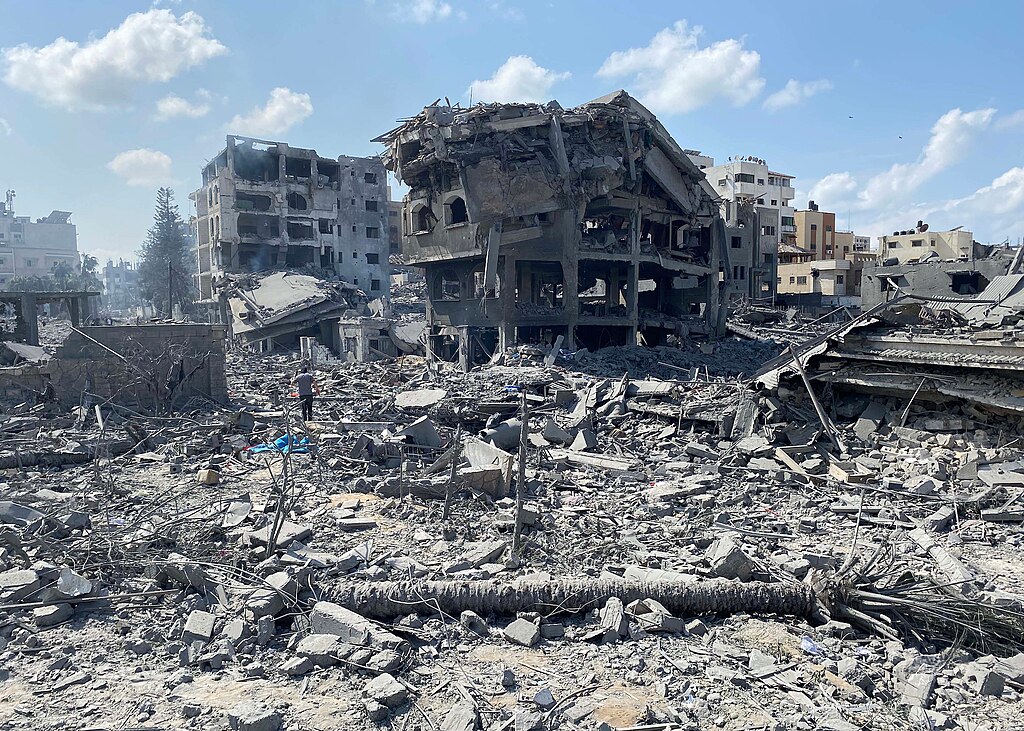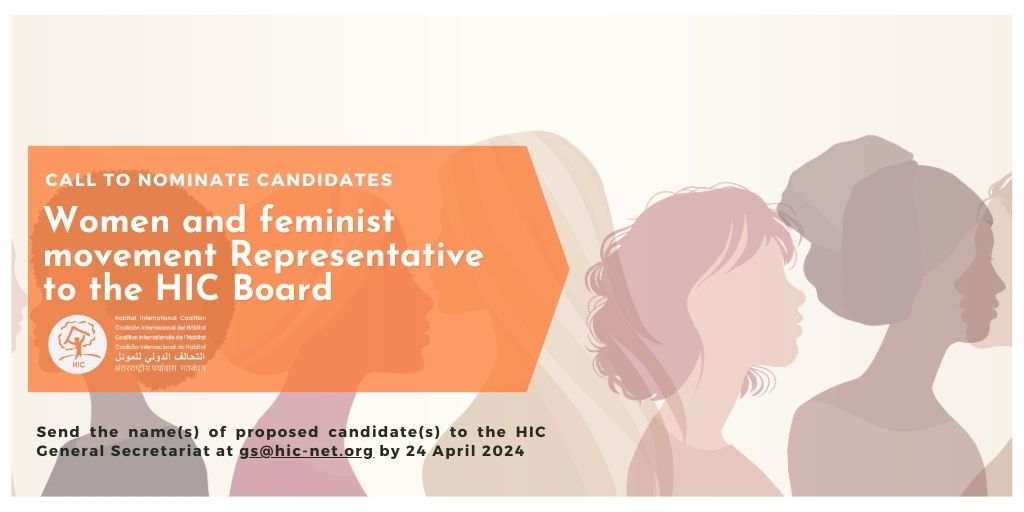Launches Its
Housing and Land Rights Day Campaign 2007
joining forces worldwide in initiative:
Act Together – Housing for All!
On this World Housing and Land Rights Day, initiated by the UN as World Habitat Day, popular voices rise to confront the challenge of private interests that are destroying our global commons and human habitat. For Habitat International Coalition, its Members and structures, this is a day also to commemorate our mutuality, solidarity and common vision that “another—and a better—world is possible,” but only if drivers of global economy urgently change course.
Today, the policies of most governments and multilateral agencies increasingly converge around an ideology and practice that squander environmental resources and persecute and evict vulnerable people, in marked contrast to the lofty commitments summarized in the Millennium Development Goals. We have trodden already halfway down the path toward the improvement of living conditions and access to adequate water and sanitation intended by MDG 7. The goals themselves may fall way short of the progress needed, while the promise of improved housing for 100,000 million slum dwellers by 2020 anyway will be far outstripped by the burgeoning numbers of a further half-billion living in squalor within that same time.
While the UN Habitat slogan for this year’s commemoration of “Habitat Day” asserts that “a safe city is a just city,” its interpretation will differ from one public to the other. For us, the theme freshly reminds us how hazardous it actually is for those defending the housing rights of the vulnerable and marginalized inhabitants of our cities. (HIC’s Housing and Land Rights Network issued its report today on A Pattern of Persecution: The Growing Attack against Housing and Land Rights Defenders.) Others may understand the UN Habitat slogan to be an urban law-and-order appeal, but that has come to mean more and more that cities deliberately criminalize inhabitants for their poverty and homelessness, instead of guaranteeing access to land and housing as to goods, services and public spaces. However, officials of the state, from law enforcement officers colluding with aggressive developers, to judges dismissive of their duty to apply human rights treaty obligations, coincide to make the city neither safe nor just for the urban poor.
As governments and media hold security issues as their foremost concern, so do many UN programs. We do not believe that the citizen’s security axiomatically leads to justice. The concern that keeps us denouncing, criticizing and formulating alternative proposals is, rather, that only a just city can become a safe city.
The headlong pursuit of the urban agenda as the unquestioned assumption of development drives both push and pull factors that uproot rural people, including peasants, pastoralists and indigenous peoples from their lands and natural resources. For them, the city becomes a domicile of last resort when survival on the land is no longer viable. In that light, this year, marking the tipping point of over 50% of humanity inhabiting cities, is no cause to celebrate. Our metropolises, whether recognized “world-class” cities, or jealously aspiring ones, may gleam for some. However, they also concentrate ever-expanding production and consumption as if world resources were as limitless as theoretical economic-growth models. In their wider environmental and social context, unbridled urbanization is not sustainable, and alternatives to dispossession and migration are
urgently needed.
Our collective experience has shown that low-income and marginalized communities initiate and produce human habitats better and more economically than the top-down models. They seek well-being and tenure security as goals, but private ownership is not the purpose. The International Union of Tenants has made the point on this Housing and Land Rights Day that affordable rental housing is both modern and needed for guaranteeing social cohesion and mobility.
People need options, not rigid homogenization. We are witnessing this year also how the promotion of private ownership has become a trap for thousands of new, subprime mortgage holders who face eviction, burdensome debt and dashed hopes of credit in their future. We see many better policy options than to subject vulnerable people to such a fate.
On this day, HIC celebrates its own internal diversity with an outward expression of the need to cohabit this planet in a far less-consumptive and more-selfless manner, with reciprocity and solidarity. This is a day to reflect on both local and global habitat policies, and set a people-centered, alternative course.
On this day, HIC joins many other networks in launching a four-month Global Housing Campaign onward to the 2008 World Social Forum’s new expression on the Day of Action and Mobilization all over the world on 26 January.
Join us.
Davinder Lamba, President
Ana Sugranyes, General Secretary
Joseph Schechla, coordinator, Housing and Land Rights Network
Lorena Zárate and Enrique Ortíz, HIC Latin America






